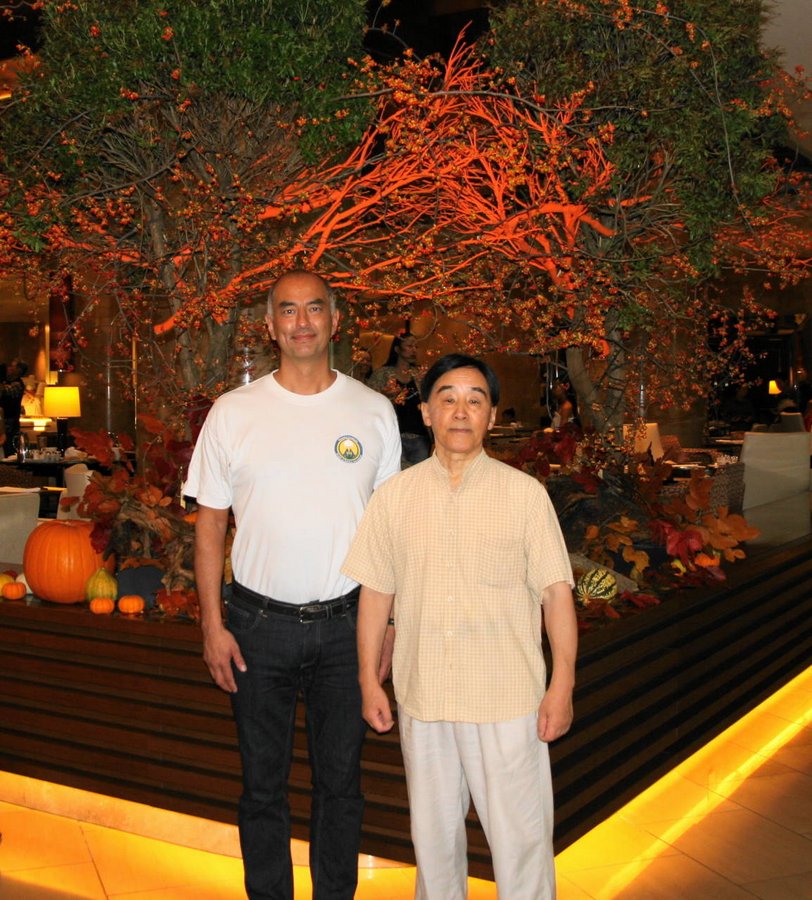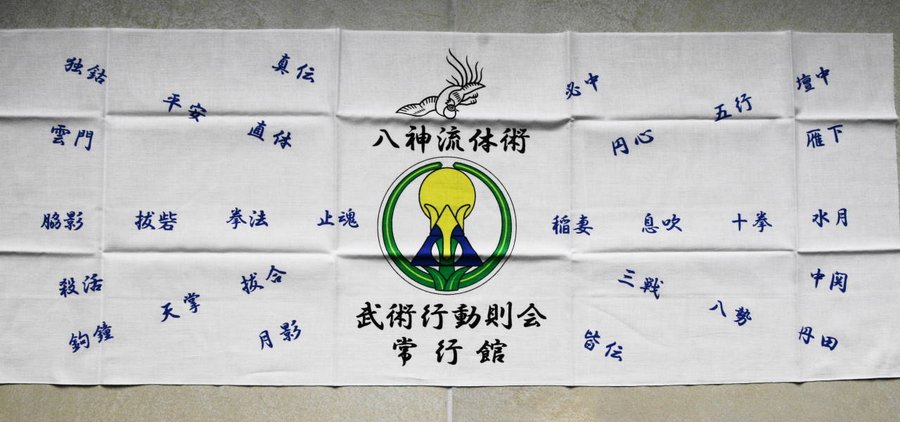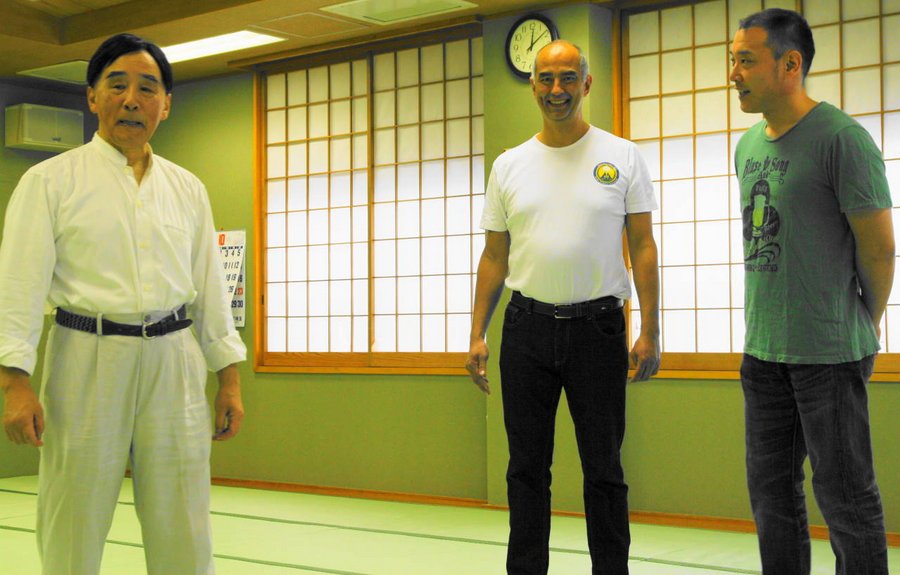
The same rules apply to everyone, regardless of belt level in Shindenkan, and therefore I will of course also share my experiences, experiences and training during my 44th training camp with SST and my 60th time in Japan. My challenge is simply that this is TG12+, which can be challenging for a TG1-TG6 to benefit from. But I am happy to share and will therefore approach it in an informative way, which I hope will be beneficial and enjoyable.
Six days in Japan and my 44th training camp with SST. I actually thought it was No. 43 myself, but SST (Soke Sensei Tonegawa) pointed out that in his meticulous records it was No. 44. SST's execution of the kata Bassai was, by the way, the single experience that made the absolute greatest impression on me throughout the training camp. Why? Because it was perfect!
Many karate-do practitioners will say; "Hey, why can a kata like Bassai be something special when many martial arts systems have this in the curriculum for brown belt?". It is very simple to answer; “Martial arts and martial arts are two very different things – martial arts are just the shadow of martial arts and really haven't evolved much since their main creation and spread after the Second World War, apart from being made more visible, simpler, more commercial and more modern sportingly on an equal footing with other more well-known sports such as football, tennis, badminton, handball, etc.
Martial arts and martial arts also have two completely different purposes; Martial arts is SPORT, but has its idea and origin from martial arts. Sport takes place in 99 % within the participant's comfort zone, with the exception of the physical one. Martial arts are life and death, and take place 99.99 % outside the participant's comfort zone, with the exception of the physical one. In sport, the decisive difference at the world elite level is the 0.1 % – 1 % which takes place outside the athlete's comfort zone, and the decisive difference which can mean medals or just an honorable result. That is why many multiple world champions in various sports give up after a short time if they take up martial arts. There are countless examples of this over the years.
Minouchi Sensei, a famous Japanese martial arts grandmaster said that a martial artist (Budo & Bujutsu) can also be an elite sportsman, but an elite sportsman conversely cannot be a martial artist – – martial arts and martial arts are very different things. Minouchi Sensei's statement has also been the main source of inspiration for POMW – Project Old Modern Warrior to try to answer the modern questions that are received daily all over the world; What is the value of Budo today compared to modern civilian like military sports and skills? And what is the difference?
This also means that there are different levels of competent execution of the same kata. There is a big difference between whether it is a martial arts grandmaster or a martial arts grandmaster who performs this. These are two different worlds and thus two different kata. That is why it is often also called OMOTE and URA – outer essence and inner essence. In martial arts it is called kata, and it is also called in martial arts. But at some point on a martial artist's path – DO – Michi, that practitioner's kata will turn into Mai. A development from the outer essence to the inner essence. SST's version of Bassai is the Ura – Mai version at the highest level.
As the "martial arts grand master laboratory" with SST at the helm now, URA has fully developed the essence within Japanese and Okinawa Karate-do, Chinese Hsingi, Aiki-, and Ken- and Iaijutsu, the next several years will be spent on the superstructure to this solid foundation on; Yashin Mon.Yakami no Taijutsu – the thousand year old martial art system based on the 8 powers and 12 principles.
The joint dissemination, dissemination and communication of this work was the focus of this essential training camp. As a mark of this, a sweat scarf was produced on this occasion with the entire essence of this foundation step; kata, mai, kyusho, the common thread and development process, strategy, tactics and operational levels, etc., etc.

Yashin Mon. Yakami no Taijutsu was originally only from Menkyo degree and up. This means from 6th dan, Yakami Shinsei-ryu and 7-8th dan single track martial arts. Menkyo means "Master of all the martial arts". This is the pinnacle of martial arts, but also the transition bridge to martial arts. Martial arts are originally from Menkyo Kaiden and up. This means from 8th dan, Yakami Shinsei-ryu and 9-10th dan single track martial arts. This means that the possible number of students for Yashin Mon. Yakami no Taijutsu is severely limited and therefore will end up dying out like many of the other original and ancient martial art systems, or simply become a shadow of its essence and origins.
The martial arts master laboratory, headed by SST, thinks this will be a great loss, and will therefore learn from history and all the mistakes that have already been made in the martial arts world. However, not blindly in the belief that everyone can or will go this way, but that more will have the opportunity to make the choice if they meet the requirements for this.
The solid foundation on top of the URA essence must be easy to maintain for a martial arts grandmaster, as he must both teach this, but at the same time also continue his own development within martial arts with the superstructure; Yashin Mon. Yakami no Taijutsu. This is done through the following Mai (kata); Pinan/Heian 1-5, Naihanchi, Yumibari (Seishan) and Bassai. The essence of all the previously mentioned systems is expressed and trained in these mai / Kata. This applies to the essence of all systems. It is very beautiful, but contains both life and death – it is the foundation of martial arts at the essence and peak of martial arts; 8-10.dan, martial arts or Menkyo to Menkyo Kaiden, martial arts.
I was again also invited to a visit to Jokokan Tokyo, where Shihan Matsuda Shintaro, Kano, and Kobayashi also participated as the management team from Jokokan Tokyo. Good meaning training always takes place under very special circumstances and conditions for a Scandinavian or European. Matsuda Shintaro (b.1968) is an old acquaintance of Shindenkan, as he was SST's assistant during the SST Shindenkan training camp in 2003. You can read more about that on the website under article archive, article 21-04-2003 Soke Sensei Tonegawa is coming to Denmark again and 01-08-2003. Jokokan's Soke Sensei Tonegawa camp July 1 - 6, 2003

Nishiwake Sensei from Jokokan Iwaki, was also supposed to participate, but had to cancel at the last minute. His son Takeshi, Menkyo, visited Shindenkan in 2003 for teaching. You can read more about this on the website under article archive, article 18-09-2003. The Japanese come to Denmark
Although Shindenkan's highest authority, the General Assembly 2003, decided that Shindenkan's Chief Instructor and Martial Arts Grandmaster would very much like to attend an annual training camp with SST in Japan, this has not always been able to cohere in various ways. But this year they managed to collect all the ends. If top to bottom in an organization does not develop, challenge, listen and follow along, all development and dynamism stops throughout the entire organization, and over time becomes just a shadow and illusion. In Shindenkan, being is more important than seeming. There is room for everyone – the elite as the exerciser – both as a martial artist and as a martial artist, and we meet people where they are and take them on a journey. For me, it was another fantastic, challenging and clarifying SST and laboratory training camp in Japan, together with all my colleagues with different fundamental backgrounds, but common spirit and purpose.




